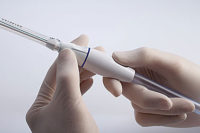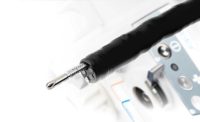In May, the European Union’s sweeping new Medical Device Regulation (MDR) will take effect. (The law had been scheduled to go into effect last May, but was postponed due to the COVID-19 pandemic.)
Among other things, the MDR requires medical device manufacturers to implement a unique device identification (UDI) system like the one mandated by the U.S. Food and Drug Administration in 2013. Under MDR, every medical device is required to bear a unique, globally recognized identifier so it can be tracked from the point of manufacture, through distribution, to final use. The goal of the system is to facilitate medical device recalls; aid adverse event reporting; improve supply chain security; and prevent medical errors.
The identifier must be permanently marked on the device, as well as at all levels of packaging (box, carton and individual sterile package). Depending on space, the identifier must appear as a human-readable number, an automatic identification code, or both. The code could be a bar code or a Data Matrix code.
Medical device assemblers will be required to share information about products in a standardized way, and they will need to submit UDI data to a centralized repository, the European Databank on Medical Devices (Eudamed).
Placing identifying marks on packaging can be accomplished any number of ways, but marking directly on medical devices is more of challenge. Medical devices are small; they are produced in large batches; they must be sterile; and they are made from tough materials, like titanium and stainless steel.
Marking lasers are ideal for the task. Lasers can mark any kind of material, from stainless steel and aluminum to plastics and organic materials.
For example, the TruMicro Mark 2000 from TRUMPF Inc. produces extremely short laser pulses (0.4 to 20 picoseconds) of high energy (up to 20 microjoules). It produces corrosion-resistant marks that maintain their high contrast appearance even after repeated cleaning and sterilization.
The pulses emitted by the TruMicro Mark 2000 are short enough to enable cold material processing. In other words, the time taken to absorb the laser energy is shorter than the time required to heat up the surrounding material, so the machining of the material is completed before thermal processes can take effect. To mark the medical device, the high-power laser pulses initially produce a nanostructure on the device’s surface. This rough surface then creates a kind of light trap that significantly reduces the diffuse scattering of the light, causing the mark to take on a permanent dark black hue, a process known as black marking.
A major advantage of this method is that it allows the protective chromium oxide layer of the steel to re-form after processing, preventing the onset of corrosion. Black markings are ideal for rust-free stainless steels, aluminum, titanium, copper, brass and chromed plastics.
To ensure the readability and durability of black markings, even when they come into contact with cleaning agents and high temperatures, medical device assemblers may want to use targeted passivation. An acid bath of nitric or citric acid will remove highly reactive components from the surface (such as free iron ions) and encourage the quick formation of a new and clean chromium oxide layer for even better corrosion resistance. The surface is cleaned simultaneously during this process, and sulfurs are dissolved. However, with the precise selection of laser marking parameters, passivation may not be needed.
TRUMPF’s TruTops marking software enables manufacturers to create standard-compliant UDIs from company and production data. Engineers can use any of the three accredited labeling standards (GS1, HIBC and ISBT 128) to present their data in UDI format. The software also allows manufacturers to quickly scan and read UDIs on finished devices for quality control purposes.




